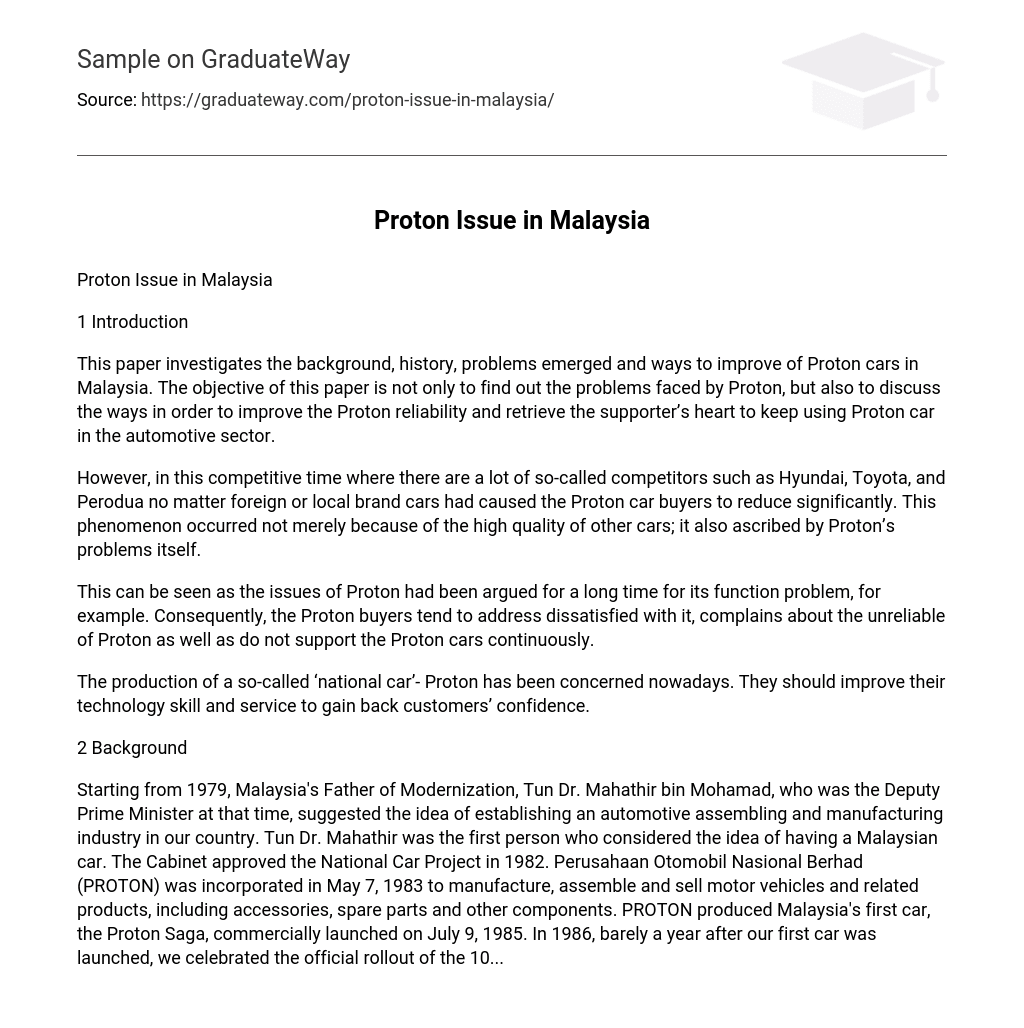Introduction
This research examines the background, history, emerged problems, and methods of enhancing Proton cars in Malaysia. Its aim is not only to identify the challenges faced by Proton but also to explore ways to enhance their reliability and regain customers’ trust in using Proton cars in the automotive industry.
In this competitive era, the presence of several rivals including Hyundai, Toyota, and Perodua, both local and foreign car brands, has led to a significant decline in Proton car buyers. This decrease in sales can be attributed not only to the high quality of other cars but also to inherent issues within Proton itself.
The function problem of Proton has been a subject of debate for a long time. This has resulted in dissatisfied Proton buyers who complain about the unreliability of Proton and do not show continuous support for Proton cars.
Nowadays, the focus is on the production of a ‘national car’ called Proton. In order to regain customers’ confidence, they need to enhance their technology skills and improve their services.
2 Background
In 1979, Tun Dr. Mahathir bin Mohamad, Malaysia’s Deputy Prime Minister at the time, proposed the idea of establishing an automotive assembling and manufacturing industry in the country. It was Tun Dr. Mahathir who first considered the concept of a Malaysian car. The National Car Project was approved by the Cabinet in 1982 and Perusahaan Otomobil Nasional Berhad (PROTON) was incorporated on May 7, 1983 to produce, assemble, and sell motor vehicles and related products including accessories, spare parts, and components. PROTON launched Malaysia’s first car, the Proton Saga, commercially on July 9, 1985. Just a year later in 1986, we celebrated the official rollout of the 10…





